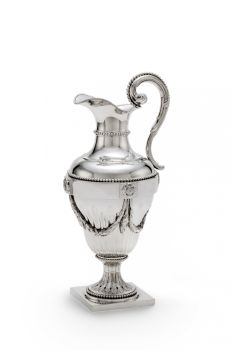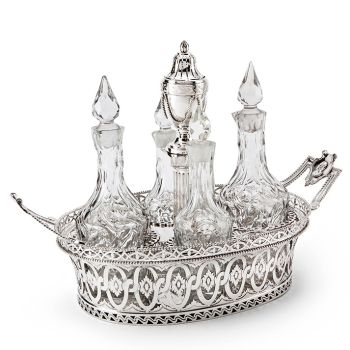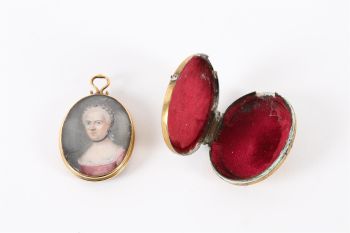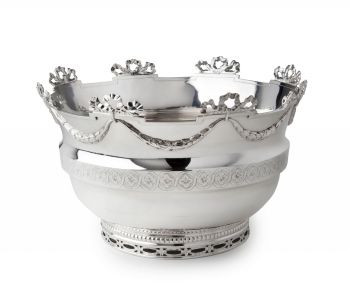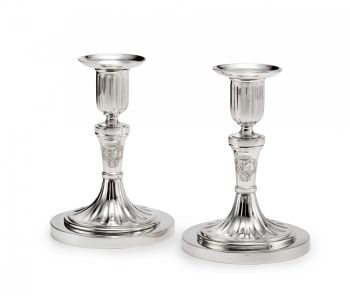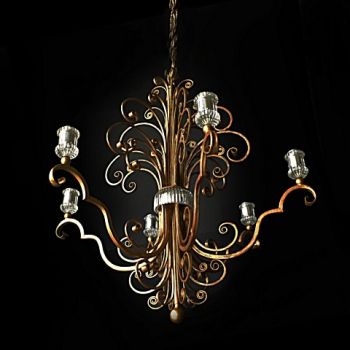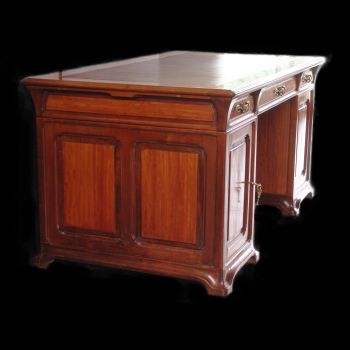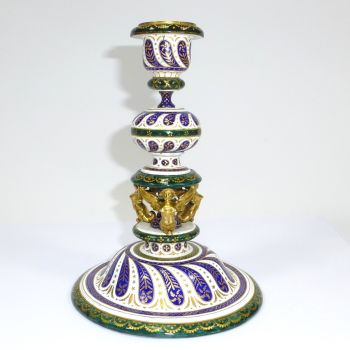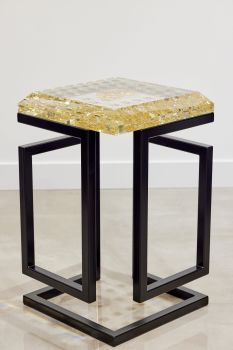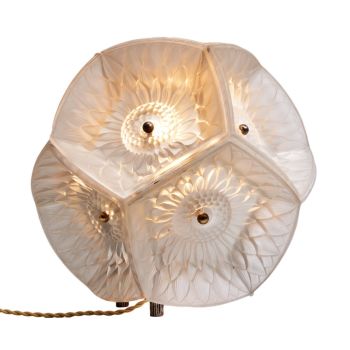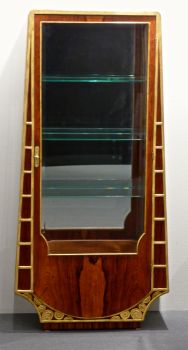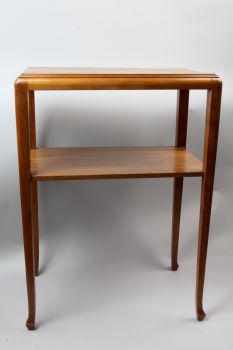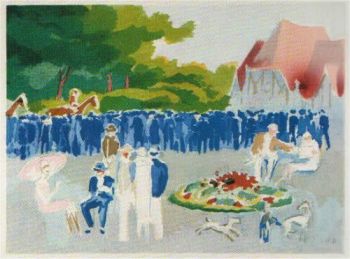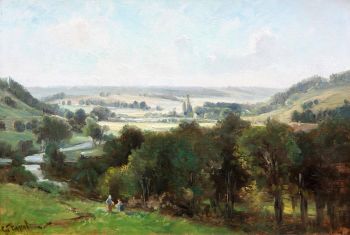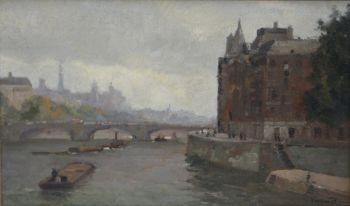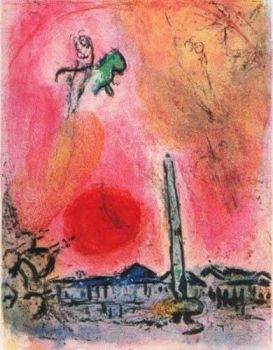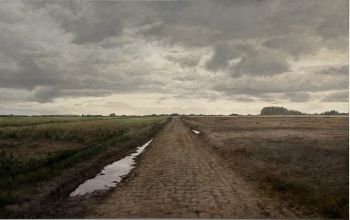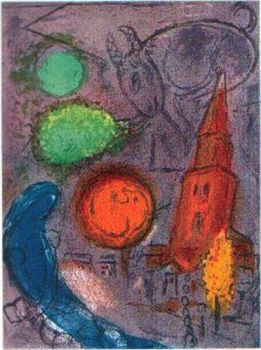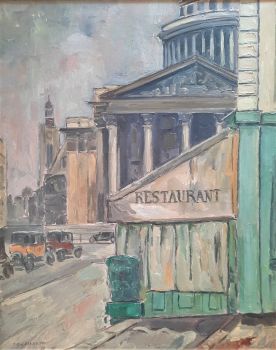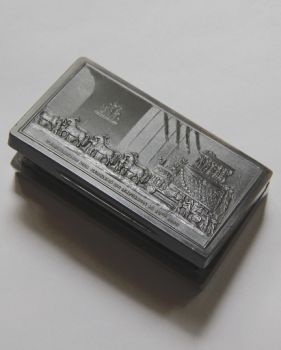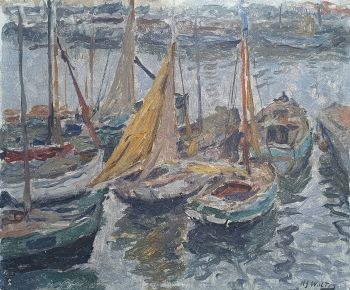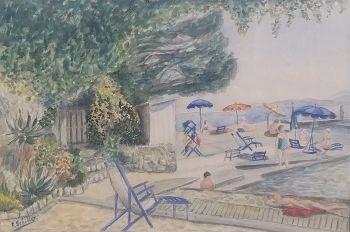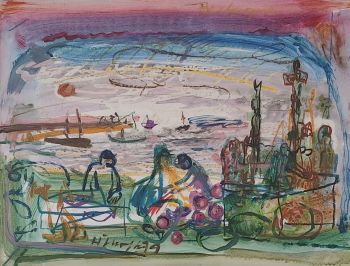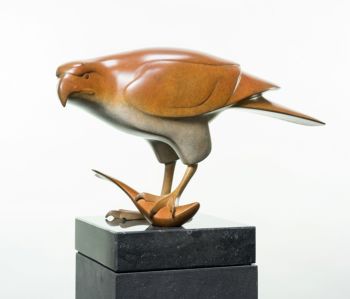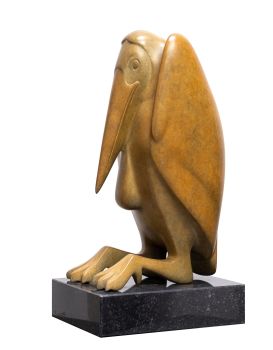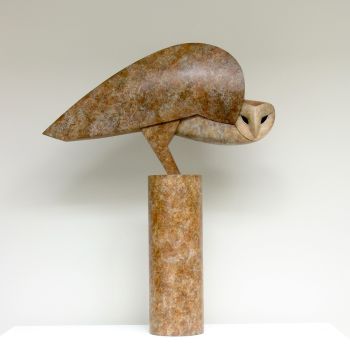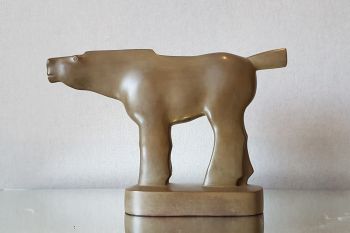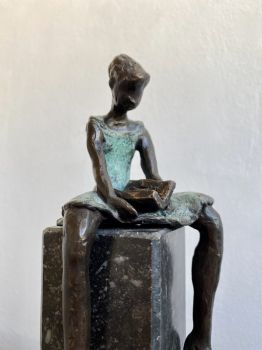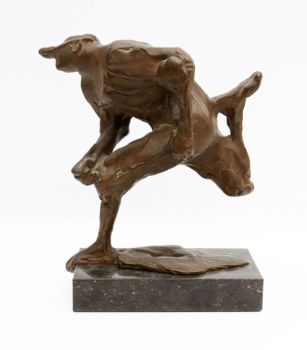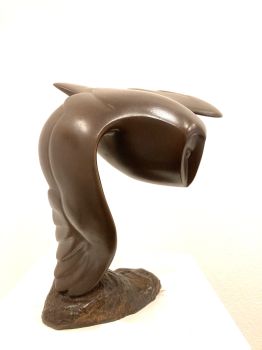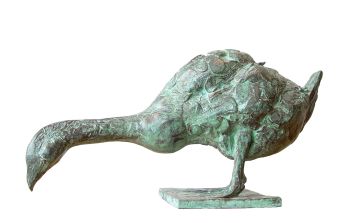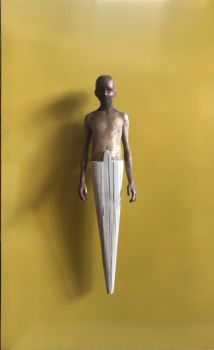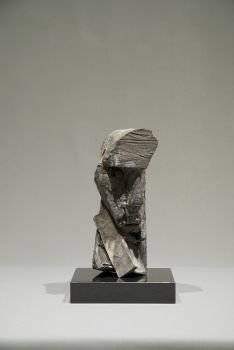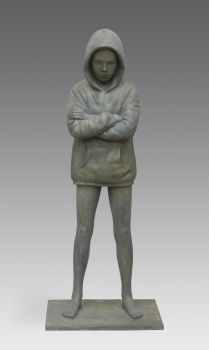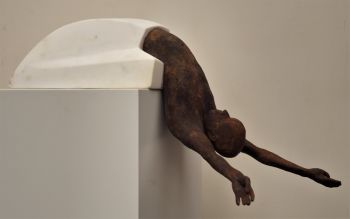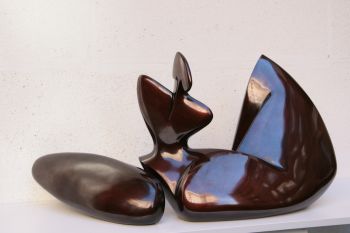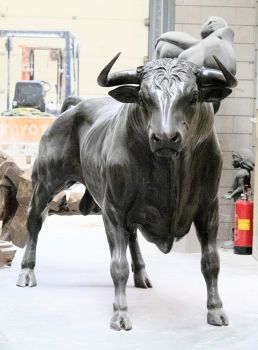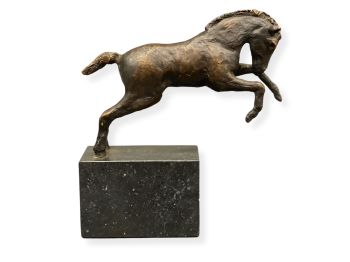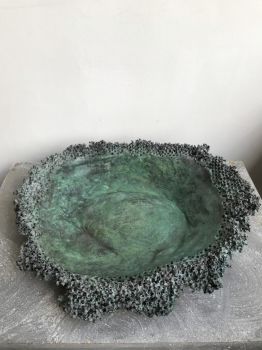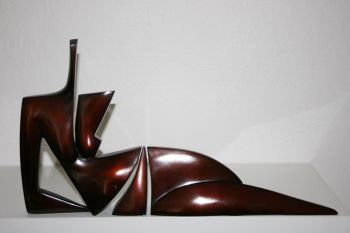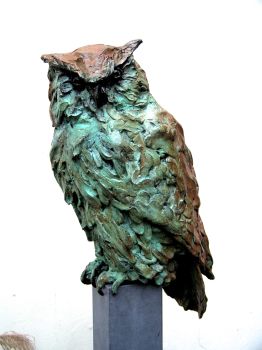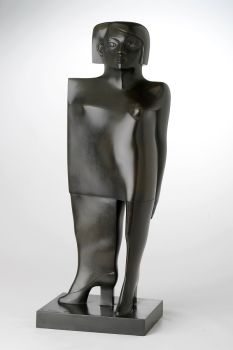French Skeleton Clock with Full Calendar 1792 - 1797
Laurent Ridel
MarmoPietraBronzoMetalloSmalto
53 ⨯ 28 ⨯ 14 cm
Attualmente non disponibile tramite Gallerease
- A proposito di opere d'arteA French skeleton clock with calendar indicating days, symbols of days, months, seasons, mooncalendar, date, hours, minutes and seconds.
The clock has a 15-day going train with pinwheel escapement. The striking train strikes on the hour and half hour.
The white marble base rests on six adjustable feet and is decorated on the front with a fire-gilt bronze relief of playing putti in the style of Clodion. With an arched construction the clock stands on four white marble columns.
The entire clock is lavishly decorated with blue and white enamel. The enamel is signed by the famous Joseph Coteau (1740-1812). Coteau was one of the important enamellers of his time and manufactured many clock decorations. Coteau, born in Geneva, becomes a master enameller in 1766 at the académy de Saint Luc. He settles on the Parisien rue Poupée in 1772 and soon acquires a reputation as gifted miniaturist. He develops a better method to apply gold to porcelain in association with the manufacture de Sèvres. For the same company he also designs objects decorated with faux jewelry. After the ban on the guilds in 1791 the enamellers are allowed to sell their work without the intervention or mentioning of clockmakers.
This clock is signed on a cartouche below the main dial: Ridel à Paris. Laurent Ridel worked in Paris from 1789 to 1800. Ridel also belonged to the top of his trade and only worked with cases of the highest quality manufactured by Lemoyne, Feuchères, Denière, Mathelin, and Deverberie. The enamel usually came from Coteau, like on this clock. Little is known of Ridel’s life before the Revolution. J-D Augarde, however, mentions a cartel clock made for Mesdames Victoire et Adelaïde for the castle Bellevue in 1789.
Provenance:
with Van Dreven en Toebosch, Amsterdam (1996)
Private collection Belgium
Literature:
P. Kjellberg: Encyclopedie de la Pendule Française, les Editions de l’amateur, Paris, 1997, p. 319.
F. Duesberg, Musée François Duesberg, Bruxelles, 2004, p. 103.
Catalogue Artfair Breda 1996, p. 35. - A proposito di opere artistaLaurent Ridel lavorò a Parigi dal 1789 al 1800. Anche Ridel apparteneva ai vertici del suo mestiere e lavorava solo con casse di altissima qualità prodotte da Lemoyne, Feuchères, Denière, Mathelin e Deverberie. Lo smalto di solito veniva da Coteau, come su questo orologio. Poco si sa della vita di Ridel prima della Rivoluzione. J-D Augarde, tuttavia, cita un orologio del cartello realizzato per Mesdames Victoire et Adelaïde per il castello Bellevue nel 1789.
Artwork details
Categoria
Soggetto
Stile
Materiale e Tecnica
Colore
Related artworks
Johannes La (le) Blanck
Un set di ampolle d'argento olandese a doppio uso1786
Prezzo su richiestaJacob J. Roosjen SRI
Reynier de Haan
Un'elegante coppa Monteith in argento olandese Luigi XVI1778
Prezzo su richiestaJacob J. Roosjen SRI
Johannes Schiotling
Un paio di candelieri olandesi in argento1784
Prezzo su richiestaJacob J. Roosjen SRI
1 - 4 / 8Artista Sconosciuto
UN NETSUKE IN AVORIO DI UN OLANDESE CHE TIENE UN GALLETTO18th century
Prezzo su richiestaZebregs & Röell - Fine Art - Antiques
Artista Sconosciuto
EIGHT NEO-GOTHIC STAINED GLASS WINDOWS WITH SUSPENSION EYELET, 19th C, BELGIUM.1850 - 1900
Prezzo su richiestaSpectandum Gallery
 A cura di
A cura diDanny Bree
Artista Sconosciuto
A rare Japanese export lacquer medical instrument box1650 - 1700
Prezzo su richiestaZebregs & Röell - Fine Art - Antiques
1 - 4 / 24Herman Bogman jr.
Le Pont au Change et Le Conciergerie in Paris 1935 - 1945
Prezzo su richiestaAdelwein Kunst
Bob Buys
Paris, Gare de L'Est, Passerelle de la Rue d'Alsace1940 - 1950
Prezzo su richiestaAdelwein Kunst
1 - 4 / 22Arie Teeuwisse
Titania and Nick Bottom (the weaver)20th century
Prezzo su richiestaKunsthandel Pygmalion
1 - 4 / 24



